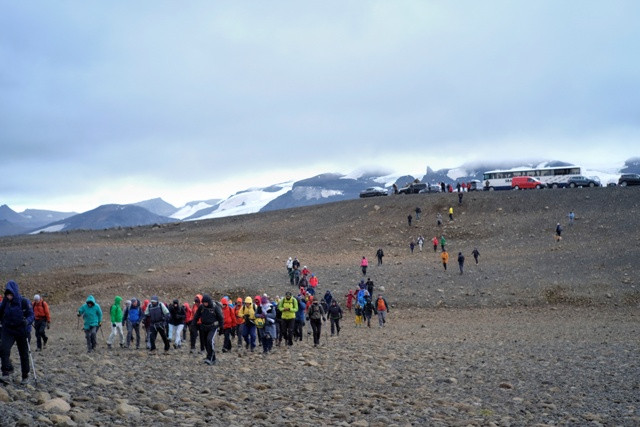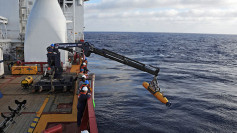Iceland warns the world of the grave impact of climate change by conducting a funeral for the Okjokull glacier which became the Island Nation's first glacier to die of environmental risk. Now, Iceland fears that hundreds of its other ice sheets will follow the same fate.
As part of the ceremony, attended by more than 100 people, a bronze plaque was erected in the now barren soil where the Okjokull Glacier was once standing. The funeral was attended by Iceland's prime minister Katrin Jakobsdottir, former UN human rights commissioner Mary Robinson and Icelandic and American scientists who lead studies on Okjokull.
"[Okjokull] is the first Icelandic glacier to lose its status as a glacier," the bronze plaque reads in English. "In the next 200 years, all-out glaciers are expected to follow the same path. This monument is to acknowledge that we know what is happening and know what needs to be done. Only you know if we did it," it said.
The Island Nation is losing about 11 billion tons of ice yearly. Recent studies suggest that Iceland will continue to lose more than 400 of its glaciers by 2020. Glaciers make up nearly 11 percent of the nation.
Climate change can truly bring a severe impact. One of its devastations may come in the form of global economic disruption. Hence, financial experts believe that fighting climate change is one among the major steps to shelter markets against financial instability and economic slowdown.
For example, countries acting in accordance with the Paris Agreement have bigger chances of growing economically in the years to come despite global environmental threats. This was according to a paper released by the National Bureau of Economic Research.
One example given in the paper is that reducing annual average temperature increase to 0.01 degree Celsius is equal to reducing climate change impact in the economy by 1.07 percent by 2100. By comparison, if temperature increases by 0.04 degree Celsius yearly, the world's gross domestic product could decline by 7.22 percent in the same period.
The economic impact of climate change comes in the form of natural disasters such as storms and earthquakes. According to the Network for Greening the Financial System, the annual costs for natural disasters was $140 billion in the past 10 years.
Fortunately, countries and big international financial institutions were keen to join the fights against climate change. As proof of their commitment, a total of $30.7 trillion of world's funds was allocated in what is being called as green investments, according to the Global Sustainable Investment Alliance. The group monitors the fund pumped into green investments from participants in five regions in the United States and Australia.
Another channel through which countries and financial institutions are heeding the call to fight threats of climate change is impact investing. The concept is defined as investments made into companies engaged in social or environmental goals that promise financial return. According to the Global Impact Investing Network, the global impact investing market is currently at $502 billion.
A separate report from McKinsey & Co released in 2017 found that more than a quarter of the world's $88 trillion assets under management were allocated to other investing channels known as ESG, which stands for environmental, social, and governance.






